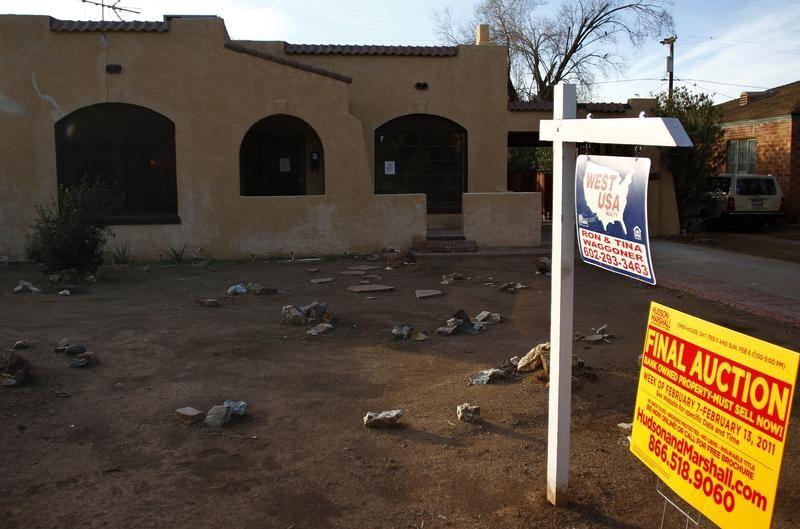
CHICAGO (Reuters) – Foreclosure is a frightening word – especially if the person losing her home is a senior living on a modest, fixed income. And some housing advocates worry that the number of foreclosures has risen sharply among one group of seniors: those who have taken out reverse mortgage loans.
But a dive into the data suggests a more complicated picture.
The California Reinvestment Coalition (CRC) reported recently that foreclosures on reverse loans soared by 646 percent in 2016. The report by CRC – a network of 300 nonprofit groups in the state working on issues of housing fairness and access – was calculated from data it obtained late last year from the U.S. Department of Housing and Urban Development (HUD) through a Freedom of Information Act request on the agency’s home equity conversion mortgage (HECM) program.
Reverse mortgages offer homeowners aged 62 years and older an option to generate cash by borrowing money against their home equity, with funds drawn as a fixed monthly payment or line of credit. Unlike a standard home equity line of credit, no repayments are required during the borrower’s lifetime. When the borrower dies, heirs can repay the remaining loan, or turn the home over to the lender.
Most reverse loans are made through the home equity conversion mortgage (HECM) program run by HUD. HECM loan volume has been down sharply in recent years, partly due to a series of HUD-initiated reforms aimed at reducing financial risk to the FHA insurance program, which repays lenders when they cannot recover the full amount at the loan’s termination. Most recently, HUD last August announced an increase in the initial insurance premiums paid by borrowers, and tightened loan limits for new HECM loans.
CRC reported that the HUD data points to 32,976 HECM foreclosures between April 2016 and December 2016 – nearly as many as occurred from April 2009 to April 2016. The average monthly foreclosure figures soared from 490 from 2009 to April 2016, but then soared to 3,664 during the following nine months. CRC also reports a large increase in the number of homeowners seeking help from lawyers and advocates to respond to foreclosure notices.
INCREASING DEFAULTS
CRC points to an increasing number of defaults by borrowers. HECM loans do not require repayments, but borrowers can default if they fail to make property tax and insurance payments, and to make repairs to their homes. CRC analysis of HUD data found that the number of defaults expected to lead to involuntary loan termination surged in fiscal 2016 to 89,064, from 45,381 the previous year. That increase likely stems from moves by HUD to require lenders to take action against borrowers who fail to meet loan terms.
Of course, failure to pay property taxes could result in a foreclosure with or without a HECM. “In that situation you could lose your home whether you have a HECM loan or not,” said Lori Trawinski, director of banking and finance at the AARP Public Policy Institute.
In response to litigation brought by AARP, HUD took action in 2015 aimed at protecting surviving spouses. The agency announced a new policy creating options for lenders to allow non-borrowing surviving spouses to stay in their homes.
But the program, called Mortgagee Optional Election, is optional for lenders. CRC contends it has not gained much traction. “It’s discretionary for lenders – and there isn’t any requirement that loan servicers let people know they have an obligation to let people stay,” said Kevin Stein, CRC’s deputy director.
HUD contends that the vast number of foreclosures occurs as part of the normal closing out of HECMs after the last surviving borrower dies. When that happens, the loan is due- heirs have the option to pay off the note if they want to keep the house. If not, they simply turn it over to the lender, who in turn initiates a foreclosure proceeding. That usually leads to sale of the home, often at auction.
HECM loan origination peaked in 2008, so any recent increase in foreclosures could simply mean that some of those loans likely are now coming due. “Borrowers are passing away,” said Peter Bell, president of the National Reverse Mortgage Lenders Association.
HUD says that occurred with 99 percent of HECM foreclosures from April 2009 thru December 2016. But that figure is at odds with analysis of loan industry data by Reverse Mortgage Insight, a firm that studies industry trends- it shows that among completed foreclosures from 2009 through 2017, 62 percent were due to death of the borrower- 22 percent occurred through a tax and insurance default, and 15 percent resulted because the borrower no longer occupied the home.
And Trawinski is skeptical that all of the recent foreclosures are due to deaths. “It is likely that some of this is due to borrowers passing away – but do I think a bunch of them passed away in a single year? No.”
Home equity is the most important asset for many middle-class households. Still, the complexity of HECM loans is one reason they are not my favorite option in the financial toolbox for retirees short of cash- downsizing by selling and moving to a smaller home – or even renting – is a more straightforward option.
But many people do not want to do that. “It really depends on what your goals are,” said Trawinski. “If your goal is to stay in your house until you die, a HECM offers a way to do that.”
 0 comments
0 comments





